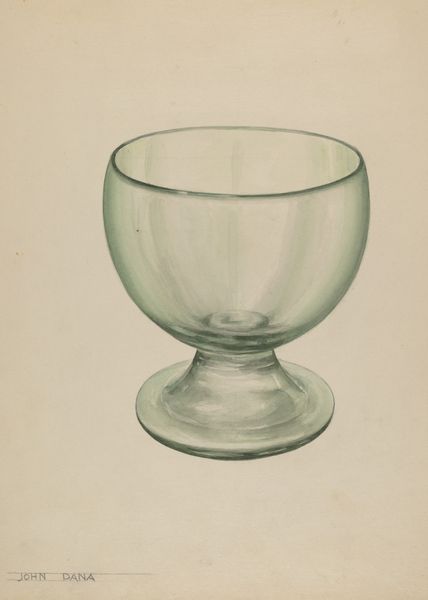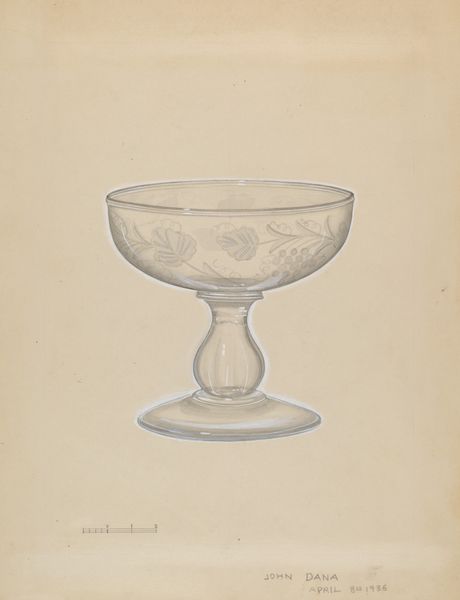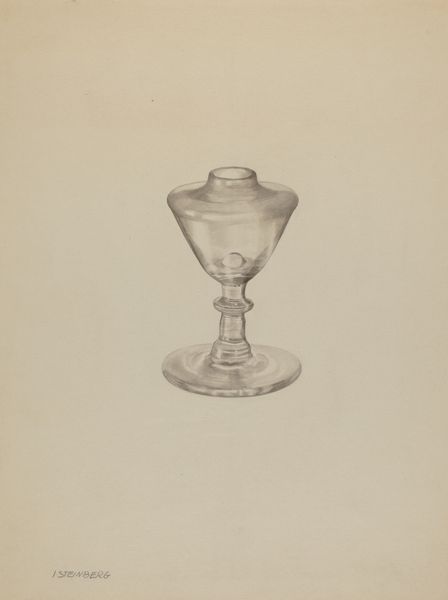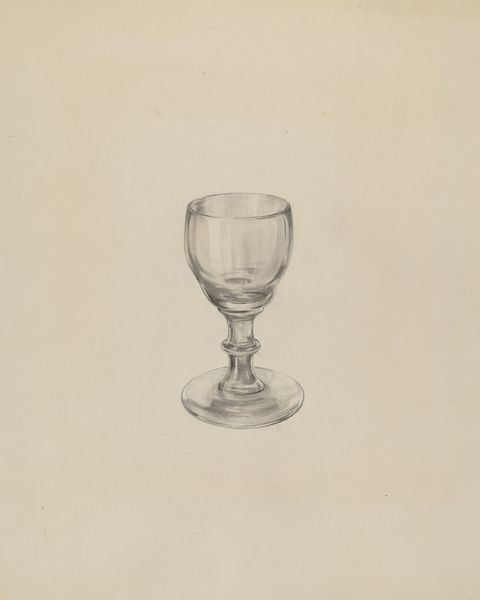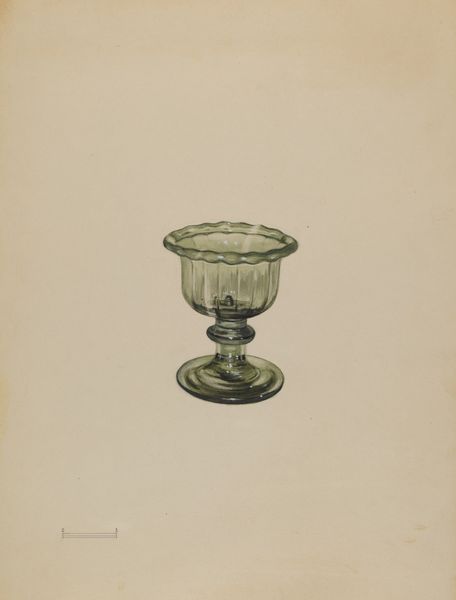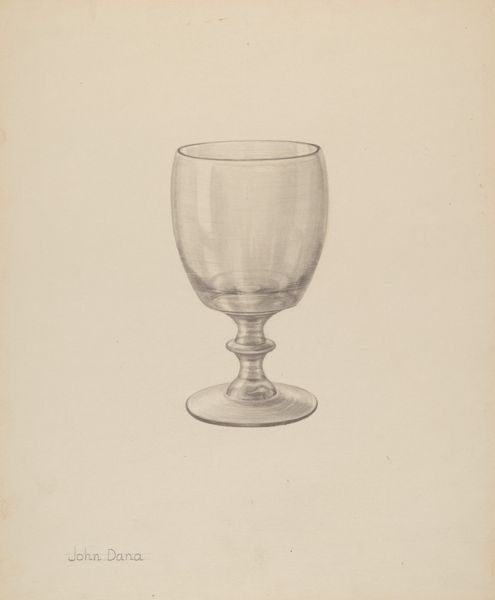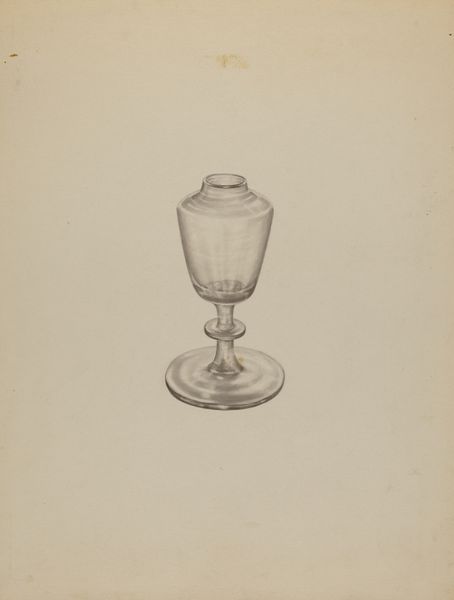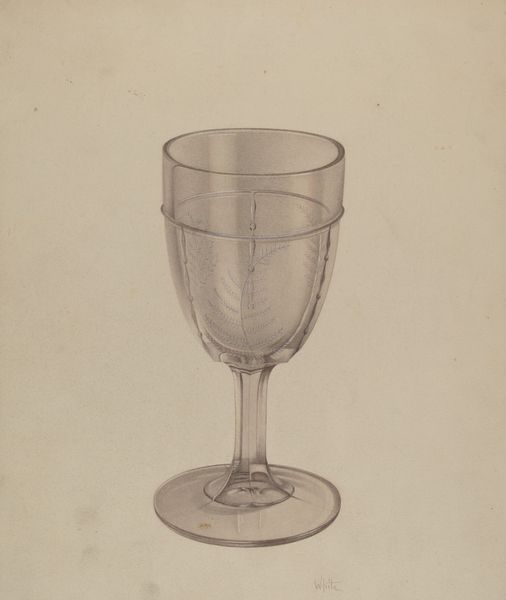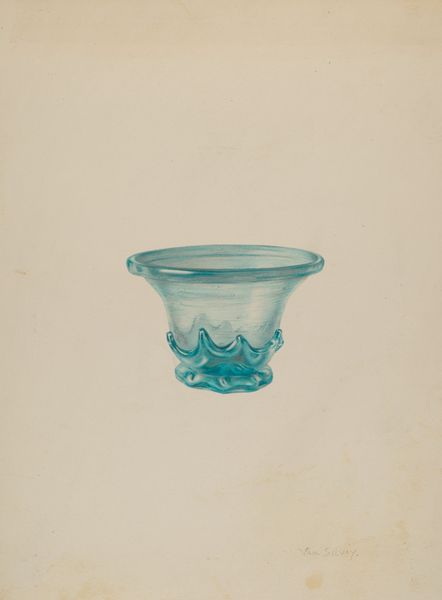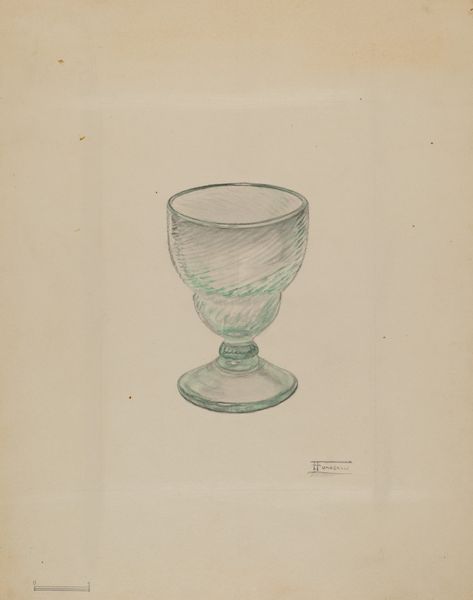
drawing, watercolor
#
drawing
#
watercolor
#
modernism
#
watercolor
#
realism
Dimensions: overall: 29 x 22.5 cm (11 7/16 x 8 7/8 in.)
Copyright: National Gallery of Art: CC0 1.0
Curator: Looking at John Dana’s watercolor, "Bowl," created around 1936, what stands out to you? Editor: The quietness of it. A subtle study in light and shadow using mostly translucent, pale washes. It has this simple realism that invites contemplation, but it's more than just representation, it feels symbolic. Curator: I agree. I am also struck by the subject's simplicity. The "Bowl" isn't presented amidst other objects or within a scene, inviting a study of form and reflection. It prompts me to wonder if this isolation speaks to a broader sense of detachment pervasive during the interwar period? Editor: I wonder how this "Bowl" may also relate to ideas of containment, maybe referencing the traditional roles assigned to women. A simple object, yet loaded when considering that. It feels resonant. Curator: It does. The bowl as domestic vessel—an element of material culture intertwined with gender and social function—allows this drawing to reveal sociohistorical information about its contemporary environment. Its clear composition and realist detail also connects the aesthetic pursuits of the modernist project with everyday scenes. Editor: Indeed. And watercolor lends itself particularly well to this type of portrayal, capturing a feeling. How the transparent quality is a reference in itself to how we should be more transparent with gender roles and biases that pervade even in art. It feels prescient. Curator: A fascinating consideration. It highlights how artworks, like this quiet “Bowl,” engage and subtly reflect evolving values and expectations. Editor: It’s precisely why approaching such unassuming works from a multifaceted perspective enables art to illuminate a wider field of enquiry, engaging history, philosophy, and identity with what we see. Curator: A thought-provoking experience. I leave with more questions than answers! Editor: As it should be. Art’s power often rests not in providing definite truths, but in the ongoing, critical, empathetic dialogues they incite.
Comments
No comments
Be the first to comment and join the conversation on the ultimate creative platform.
